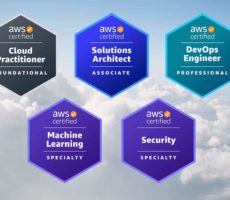Stepping back into the job market after a decade-long hiatus can feel like waking up to find the entire town speaking a new language. You’re clutching a map that’s missing half the streets, but hey – you’ve navigated tougher routes.
This blog post will guide you through the process of re-launching your career with confidence, providing actionable strategies to overcome common hurdles and land back on your feet in the professional world.
Quick Takeaways:
- Update and upgrade skills with relevant online courses and workshops, targeting in-demand competencies reflected in job listings.
- Rebuild your professional network using LinkedIn and engage in industry-related communities both online and at local events.
- Craft your resume and cover letter to address career gaps with positivity, focusing on acquired skills and learning experiences.
What’s Changed in the Workplace Since I Left?
It seems like a blink of an eye and a lifetime ago, doesn’t it? In the past decade, the workplace has undergone a series of transformations that have reshaped the very fabric of how we work. The leap in technology is evident, with cloud computing and AI becoming the new norm. If you’re dusting off your work boots after a 10-year gap, you’ll notice a stark increase in the use of project management tools like Asana and Trello, and communication platforms like Slack and Microsoft Teams. These tools have become the cornerstone of workplace productivity.
Another seismic shift has been the rise of remote work. With advances in technology and changes in mindset, many companies now offer the flexibility to work from the comfort of your home, a cafe, or anywhere with a Wi-Fi connection. A report by FlexJobs and Global Workplace Analytics found that there has been a major upward trend in remote work, with a 159% increase between 2005 to 2017, and the numbers continue soaring post-2020.
Alongside these tech advancements, there’s been a cultural shift towards valuing work-life balance more than ever before. Employers are increasingly acknowledging the importance of mental health, offering wellness programs, and supporting flexible schedules.
Lastly, your digital footprint, particularly on social media platforms like LinkedIn, is now more crucial than ever. Having an active, professional online presence can significantly boost your visibility to potential employers and open doors to opportunities that didn’t exist a decade ago.
How Can I Refresh My Skills to Be Competitive?
If you’re jumping back into the ring, sprucing up your skills is the way to go. The idea of “lifelong learning” has taken center stage, and thankfully, the internet is bursting with resources. Consider diving into online courses on platforms like Coursera or Udemy, where you can master anything from coding to public speaking.
But with a sea of skills out there, how do you pinpoint the ones you need? You’ve got to do a bit of detective work. Head over to job listings that pique your interest and make a note of the skills they’re after. Use platforms like LinkedIn to observe professionals in your desired field. What skills and certifications do they flaunt?
Once you’ve identified your targets, don’t just limit yourself to online learning. Hands-on workshops, industry conferences, and even local community colleges could give you a leg up. And if you’re looking for that extra sparkle on your resume, consider obtaining certifications. They’re like gold dust in certain industries – think Project Management Professional (PMP) for project managers or Certified Information Systems Security Professional (CISSP) for IT security experts.
For example, if you are keen on getting into digital marketing, Google offers a free Google Analytics Academy that can help you get certified in Google Analytics – a powerful tool under the belt of any digital marketer.
Where Do I Start with Networking Again?
Ah, networking. It might send shivers down your spine, but it’s the bread and butter of professional growth. Brush off your mingling fears because networking has received a digital makeover in recent years. LinkedIn has emerged as an indispensable tool, not just for connecting with individuals, but for cementing your professional brand. Make sure your profile is spick and span, reflecting your current skills and career aspirations. And don’t be shy – reach out to old colleagues, they could be your strongest allies in navigating the new job landscape.
But here’s the golden nugget of advice: quality trumps quantity. Focus on building meaningful relationships rather than collecting contacts like baseball cards. When reaching out, be genuine and offer value. Maybe share an article relevant to their field, or offer a fresh perspective on industry trends.
Beyond the digital world, real-life networking events still hold their weight in gold. Industry meetups, professional associations, and seminars can be goldmines for reconnecting with the professional community. Meetup.com is a great place to start looking for local events in your area.
To add depth to your networking strategy, consider joining professional groups related to your field. They can offer not just connections, but also insights into industry standards, upcoming trends, and even job openings. Many of these groups have exclusive forums on platforms like LinkedIn or their own websites where you can engage in discussions and show off your expertise.
Remember, this is just the beginning of carving your path back into the workforce. Stay tuned, curious, and proactive. The professional world is your oyster, and it’s never too late to create the next successful chapter in your career.
How Do I Address the Gap in My Resume?
When life unexpectedly tells you to hit the pause button, your resume doesn’t have to showcase these gaps as setbacks. On the contrary, with the right strategy, you can turn them into compelling narratives of growth and resilience. Here are a few tips:
- Start with a skill-based or functional resume format. This style emphasizes your skills over the chronological order of your work history. Lay out your competencies loud and proud at the forefront, and connect them to your professional narrative.
- Frame your gap as a constructive phase. Maybe you’ve been honing your organizational skills through volunteer work, or perhaps you dived into independent projects that showcase your initiative and expertise. It’s all valuable.
- List any formal or informal education you’ve undertaken. Online courses, workshops, or even self-taught skills can be powerful indicators of your commitment to continuous learning.
- Be honest and direct about your time away from the workforce. A well-crafted personal statement in your resume or cover letter can effectively communicate your situation, showing potential employers your authenticity and seriousness.
Take Jane Doe, for instance, who took a ten-year hiatus to raise her family. In that time, she managed a household, organized charity events, and kept the books for her community association. These roles helped her refine her leadership, event planning, and financial management skills, which are transferable to numerous professional contexts.
What Can I Expect During the Job Search Process?
The job search landscape can feel like navigating a new world, especially after a significant hiatus. Here’s what to keep an eye out for:
- Applicant Tracking Systems (ATS) are the new gatekeepers. These algorithms scan resumes for keywords related to the job description. Make sure your resume speaks their language by tailoring it with industry-specific jargon and the job posting’s buzzwords.
- A strong cover letter is your secret weapon. It’s your chance to tell your story, draw connections between your past experiences, and the job at hand, demonstrating your unique value proposition.
- Prepare for behavioral interviews. Employers love asking about past experiences to predict future performance. Use the STAR method (Situation, Task, Action, Result) to structure your responses, offering clear and concise stories that highlight how you’ve tackled challenges in the past.
Remember, persistence is key, and rejection is not a reflection of your worth—it’s just part of the process. Keep refining your approach, and don’t be afraid to ask for feedback after an interview. While ghosting can occur, it’s their loss, not yours.
How Can I Mentally Prepare for This Transition?
Head-diving into a career after a lengthy break can be overwhelming. It’s a mental game, and you’ve got to be your own cheerleader. Consider the following:
- Imposter Syndrome is real, but it’s not the boss of you. Replace the inner critic’s nagging voice with positive affirmations, reminding yourself of your past achievements and the new skills you’ve acquired.
- Maintaining a work-life balance is crucial. Set clear boundaries from the get-go; remember, you’re here for a marathon, not a sprint.
- Cultivate a growth mindset. This is an opportunity for a second act—a chance to redefine your career on your terms. Be open to learning and resilient in the face of setbacks.
One piece of advice that’s often overlooked? Start networking before you need it. Reach out to former colleagues, join professional groups, or participate in online forums in your field. Networking can not only land you a job faster but also provide a support system to lean on during this transition. This personal connection has the added bonus of bypassing ATS and getting your resume directly into the hands of hiring managers.
Remember, you’re not just returning to work; you’re advancing to the next level of your life’s mission. Embrace it with confidence, assertiveness, and a pinch of courage.






